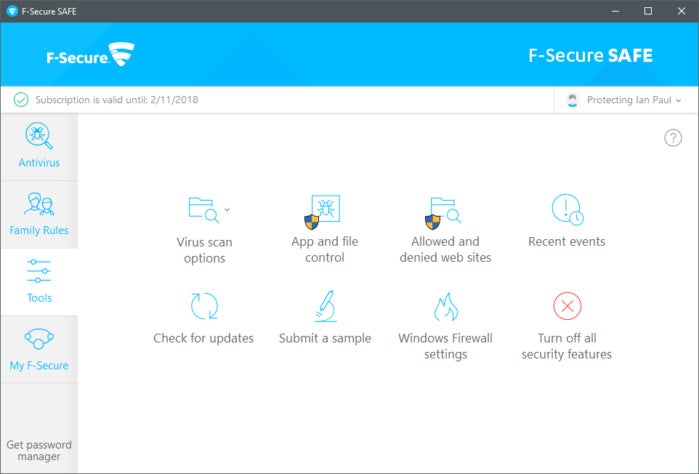
Imagine there is a malicious app overlaid on a banking app, but only in the credential area. Unfortunately, if a user turns on accessibility services this capability returns.
#F SECURE APP ANDROID#
Overlays have been removed for standard applications as of Android 10, codenamed Android Q. This feature allows apps to lay on top of each other. It uses these services to access a user’s contact information, which attackers can then use to spread the malicious app through SMS.įluBot also takes advantage of another well-meaning feature-overlays. Unfortunately, they can also be extremely useful for attackers, allowing them to, for instance, read text inputted into other apps, log keystrokes or access SMS messages. These services can be extremely useful for people with disabilities. Once installed, FluBot will request that the user activate Android’s accessibility services. Since April of this year, we’ve detected this Android malware circulating throughout Europe. OverlaysįluBot provides an extremely relevant example of how malicious apps thrive by taking advantage of our phone’s often helpful features. While avoiding installing any app that comes at you via SMS is good advice, the terms “chrome”, “voicemail”, and “video player” in the name of any app should raise some huge red flags. Typically, these apps are pushed through SMS messages. Users generally don’t end up with these bad apps because they went looking for them in official stores. Over September, 21% of the top malicious app names we detected included the word “Chrome.” The other top two terms were “voicemail”, which showed up in the names of 24% of the malicious apps detected, and “video player”, which appeared in 14% of these app names.
#F SECURE APP INSTALL#
Recently, a malicious app called “Chrome” that impersonates Google’s browser to induce users to either install or update their mobile browsing software has become increasingly prevalent. Other popular malicious apps perform operations without the user’s awareness, such as reading SMS messages or installing banking trojans. The unwanted mobile apps we see most often include adware, which monetizes itself by displaying advertising on a device. In the last year, the volume of malicious apps detected by our Android endpoint protection has been steadily increasing. While the volume of malicious apps targeting mobile devices is not as high as those plaguing desktops, these apps are common-especially those targeting the Android platform. Let’s take a look at the six threats F-Secure’s Tactical Defense Unit sees most often as we continually analyze the mobile landscape. But I can say that we must secure any platform that’s always connected, always on, and almost always within inches of our bodies. I specialize in cybersecurity not mental health, so I can’t comment on how this intimacy with a device affects our well-being.

It’s the last thing we see before sleep, and it’s usually the first thing in our hands each morning. What is the most intimate relationship in your life-aside from your partner, your children or your parents? For many of us, it’s our mobile phone.


 0 kommentar(er)
0 kommentar(er)
